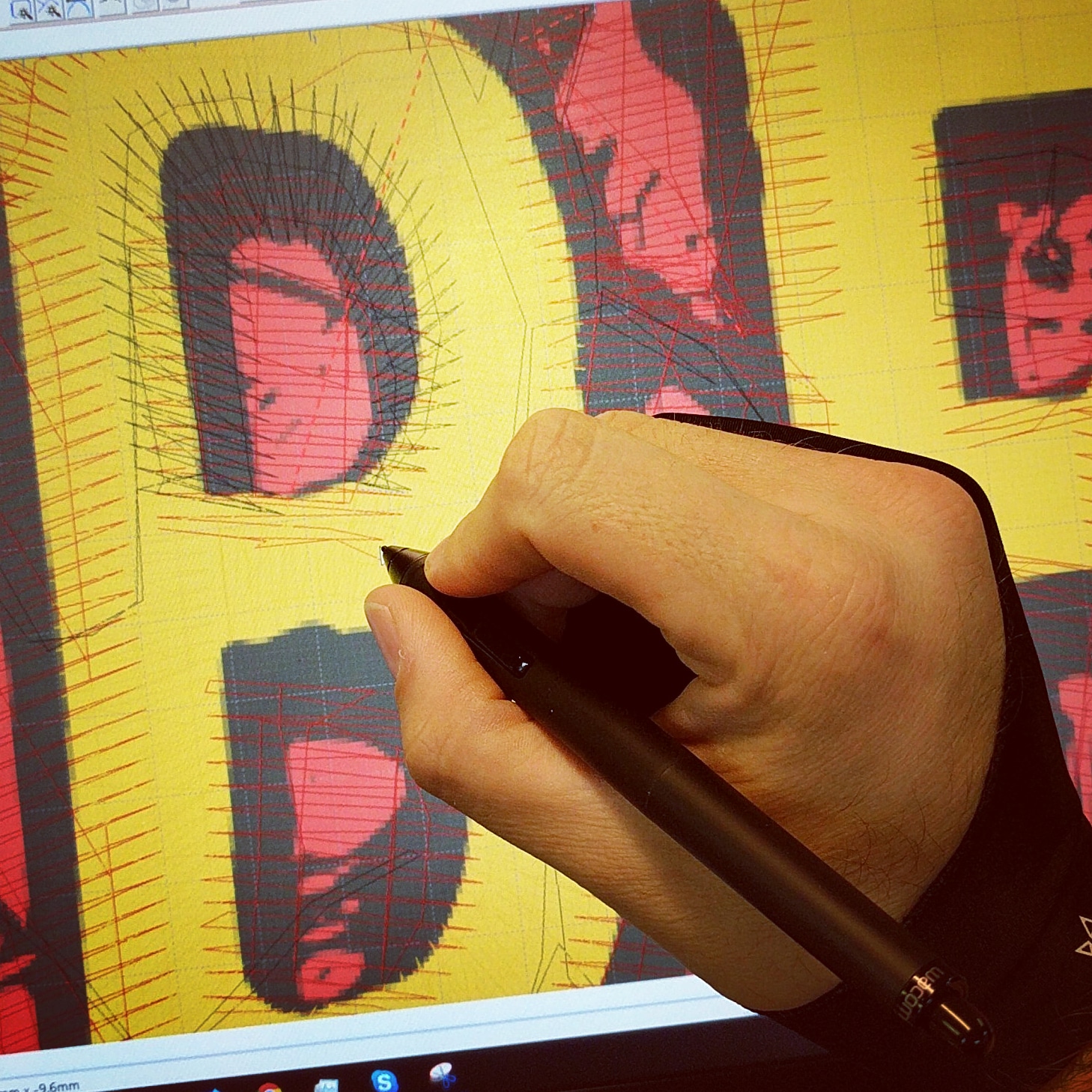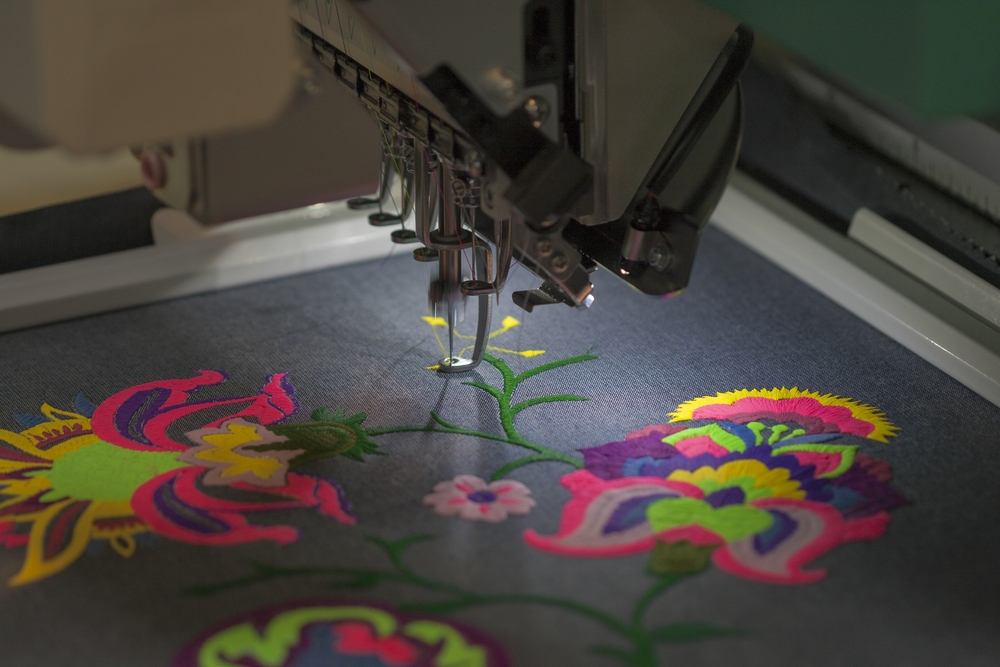Dependable Digitizing for Embroidery: Relied On by Specialists
Dependable Digitizing for Embroidery: Relied On by Specialists
Blog Article
Explore Different Kinds of Embroidery Digitizing Methods
Embroidery digitizing has progressed significantly over the years, offering a myriad of techniques to bring styles to life in the digital realm. The world expands to much more sophisticated methods like photorealistic needlework digitizing and the interesting realm of 3D embroidery digitizing.
Conventional Hand Needlework Digitizing
Typical hand embroidery digitizing involves the process of converting intricate hand-stitched designs right into digital styles for maker needlework. This technique needs experienced craftsmens to carefully assess the handcrafted design and after that make use of specialized software application to recreate it in an electronic format. Each stitch, shade, and detail needs to be very carefully converted to make certain that the significance of the original hand embroidery is preserved in the digital variation.
Among the essential challenges of traditional hand needlework digitizing is catching the complexities and nuances of the handmade style. Digitizing for Embroidery. Artisans must have a deep understanding of different needlework methods, such as satin stitch, chain stitch, and French knots, to accurately reproduce these methods in the digital world. Furthermore, they need to have an eager eye for detail to ensure that the electronic design keeps the exact same level of creativity and craftsmanship as the initial hand-stitched item
Punching Technique
To flawlessly shift from conventional hand needlework digitizing to the punching strategy, artisans need to now concentrate on converting the elaborate electronic designs right into instructions that needlework machines can analyze. The punching method involves utilizing specialized software application to produce electronic files that have commands for the embroidery maker to comply with. This procedure calls for a deep understanding of not just the style itself however also the capabilities and restrictions of the embroidery maker.

Auto-Digitizing Software Application Programs
Embroidery digitizing has actually been transformed by the introduction of auto-digitizing software program programs, providing artisans with innovative tools to convert digital styles into embroidery machine instructions efficiently. Auto-digitizing software application programs use formulas to examine digital images or vector documents and produce needlework designs instantly. These programs enable fast and accurate conversion of elaborate layouts into stitch patterns, conserving effort and time for embroiderers.
One of the vital benefits of auto-digitizing software application is its user-friendly user interface, making it obtainable to both novices and skilled digitizers. These programs often consist of attributes such as stitch editing devices, string shade matching, and the capacity to sneak find out here now peek the last embroidered style. Additionally, auto-digitizing software application can take care of intricate layouts with numerous colors and elaborate information, creating high-grade embroidery files appropriate for different garments and fabric projects.
While auto-digitizing software application offers convenience and effectiveness, it is important for individuals to comprehend the restrictions of automated digitizing. Fine-tuning and hands-on changes may still be needed to accomplish the preferred needlework quality, particularly when handling complex or special styles. By leveraging the capabilities of auto-digitizing software application alongside hands-on digitizing methods, artisans can boost their needlework digitizing process and create sensational embroidered items.
Photorealistic Needlework Digitizing
Making use of innovative digital imaging methods, attaining photorealistic cause embroidery digitizing has actually come to be a sought-after skill among modern-day artisans. This strategy includes converting high-resolution images right into complex stitch patterns that closely resemble the initial layout, causing needlework items that display natural detail and deepness.
To accomplish photorealistic embroidery digitizing, artisans have to have a keen eye for information and a detailed understanding of how various stitch types and densities can impact the final result. By carefully mapping out each shade and color in the image, embroiderers can develop a digital data that overviews the embroidery maker to replicate the subtleties of the original article source image accurately.
Photorealistic needlework digitizing is particularly preferred in developing customized styles for clothing, home decoration, and art items where recording the significance of a photo or art work is vital. This method allows artisans to change memories, landscapes, portraits, and intricate art work right into sensational embroidered masterpieces that showcase a mix of typical craftsmanship and cutting-edge YOURURL.com technology.
3D Needlework Digitizing
With the innovation of digital imaging methods in accomplishing photorealistic results in needlework digitizing, the expedition of 'D Needlework Digitizing' offers a new measurement to the details of design duplication. 'D Needlework Digitizing' describes the three-dimensional digitizing method that includes deepness and structure to needlework layouts, creating a more practical and aesthetically enticing last product. This technique makes use of software that mimics the effect of light and shadow on the needlework layout, improving its general visual effect.
One of the vital benefits of 'D Needlework Digitizing' is its ability to make designs look more natural and dynamic. By adding depth to the needlework design, the final product shows up extra reasonable and captivating (Digitizing for Embroidery). In addition, this method enables for more creative flexibility in layout implementation, enabling embroiderers to trying out different structures and effects that were formerly challenging to accomplish
Conclusion

Report this page